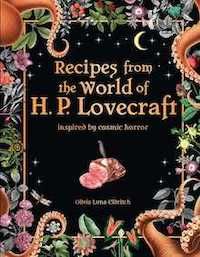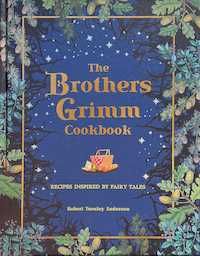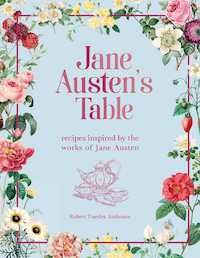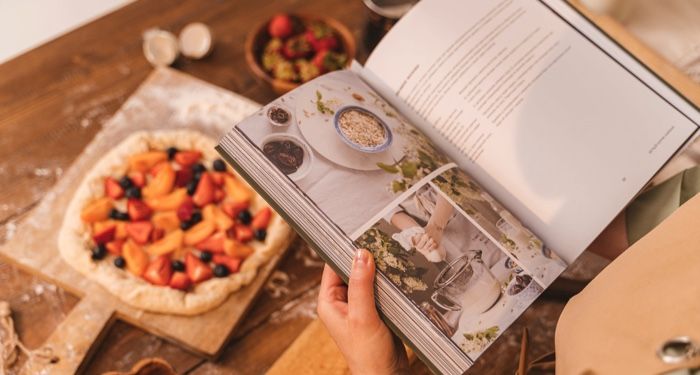This content contains affiliate links. If you buy through these links, we may earn an affiliate commission.
It’s a good time to be a cook in the fandom. Every day there are more pop culture cookbooks that combine cooking and baking with franchising. Cookbooks dedicated to Disney villains have also been published. golden girls, alice in wonderland, Star Wars, friend, and many more. Honestly, it seems like if there’s a fandom, there’s a cookbook to go with it, whether official or unofficial. Yes, I stopped writing this article just to confirm. Jurassic Park and indiana jones I had a cookbook. I will do that.
Since we’re in the month of the Great Feast, I thought it would be interesting to explore how writers create these pop culture cookbooks. I spoke with two authors: Robert Tusley Anderson and Olivia Luna Erdrich.Anderson wrote Tolkien’s World Recipes, jane austin table, Elf Cookbook: Recipes inspired by Tolkien’s Elvesand Grimm brothers cookbook. The author of Eldritch is HP Lovecraft World Recipes. Each book weaves together the author’s life and work with recipes.
Fusion of food and literature


So why combine the worlds of food and literature? For Eldritch, that meant turning the solitary activity of reading into a shared one. She said: “Celebrating a love of literature with food is usually shared, but it’s such a joyful thing. The idea of people making these recipes and having fun together while discussing the stories that inspired them was great.” I love it. I also think it helps people rediscover their favorite stories and characters and see them in a new light.”
Anderson noted the sensuality of both food and literature. “Good writing is a sensual, sensual experience. It sharpens our experience of things in the world: what we see, hear, touch…and taste.” There is a natural marriage between ingredients and words. ”
make a recipe


Some works of literature were a little easier to come up with recipes than others. “Tolkien is full of hobbits hungry for a feast (An unexpectedly wonderful tea party begins) hobbit),” Anderson said. “Austen interweaves food not only in the letters but also in the everyday lives of her heroines.” brothers grimm He explained that it’s notable that the starving lumberjack family in “Hansel and Gretel” is the opposite.
Each of HP Lovecraft’s works presented unique challenges. Erdrich says, “There’s often a certain awkwardness to the way food appears in his stories, such as Olmsted’s reluctance to eat anything other than canned soup in Innsmouth, or the fruit trees in The Colors of Space.” “It’s like how the fruits in the garden start to stink.” “”
stay true to the textbook


Translating recipes is another matter, but how do authors balance that with creating actual recipes that maintain the spirit of the book? Of course, that depends on the source material. Both authors enjoyed this challenge. Anderson says, “We have to imagine recipes that are related in some way. I confess that it’s pretty intense at times, but I try to make it fun. (Sometimes I even enjoy the tension.) ”
Anderson found Austin to be fairly easy, as it required historical research and some recipe updates.for brothers grimm, he used many basic ingredients such as milk, flour, and potatoes, which are “staples of European ‘peasant’ cooking”. But Tolkien was instead trying “the well-known problem[in the book]of using New World ingredients like tomatoes, avocados, and potatoes (potatoes feature heavily in LoTR),” he said. Told.
Eldritch loved the challenge, especially when creating recipes for abstract concepts. For example, she explained, she loved thinking about “purple truffles, inspired by the purple glow of Keziah’s ‘Witch’s Light’ in ‘The Witch’s House Dream.'”
Additionally, she enjoyed playing with food, which involved more “nausea moments.” Erdrich also enjoyed including some recipes that reflected Lovecraft’s own life and his novels, she said. He was very frugal and a little picky. It was fun finding ways to incorporate his favorite foods into recipes. I particularly liked the fact that he once described his wife Sonia’s bran muffins as “edible,” clearly demonstrating culinary excellence in his eyes. ”
But she didn’t want the cookbook to be scary. “It was a celebration of Lovecraft’s work and the place his work holds in the public imagination,” Erdrich said.
However, in addition to his contributions to horror, Lovecraft leaves a legacy of racism in his work. When asked how Eldritch approached this difficult subject, she wrote: “Lovecraft was a very fearful man, and this is evident in many of his writings, with his protagonists often being deeply frightened of the unknown. This attitude brought overt racism into his daily life.” It is a regrettable but undeniable fact that the views expressed in some of his writings and letters are reprehensible even to modern readers and are undoubtedly in line with his contemporaries. It would have been the same for many.”
She continued, “As times change and we (hopefully) become more educated and thoughtful, how much (if at all) can we understand aspects of art without agreeing with their views? It’s up to the individual reader.” of the artist. I admit that there wasn’t much room to explore this difficult topic in this cookbook, but it’s an important issue and one that many scholars and writers have tackled much more skillfully than I expected. It’s a problem. ”
Featured recipes from the book


When creating the book, the authors had several adventures with specific recipes. Erdrich pointed out that although Lovecraft refrained from alcohol, his works are full of potions and drinks, so he decided to include cocktails. But her editors thought it was too much, so she tweaked the recipe to include one of her favorite adjectives: a non-alcoholic drink called Gibbs Moon Lemonade.
When she told people she was making this book, people thought she was going to make a Cthulhu squid dish. Yes, it’s an obvious choice, she said. But her favorite was a recipe inspired by his little-known novel, “In the Vault.” She said: “It’s about an unscrupulous undertaker who gets locked in a vault full of coffins full of rotting corpses. strange story I even rejected the story because it was too gruesome. I was wondering how I could incorporate it into a recipe combination, and then I remembered the existence of coffin bread. I was pretty happy with it. ”
When dealing with food and Tolkien, the first thing that comes to mind is Lemba bread. It is highlighted as the food that Frodo and Sam eat on their final journey to Mordor. However, Anderson pointed out that there were many problems in realizing this. “Just like trying to find a recipe for ambrosia, you’ll never be able to match the fictional reality (made from the corn first sown by Yavanna, one of Tolkien’s ‘goddesses’), so you’ll probably try.” I probably shouldn’t have done it! ” he concluded.
Instructions on how to use the cookbook
So how do authors expect people to use their work? “Ideally,” says Erdrich, “Ideally, people will read the story that relates to the recipe and enjoy both together.” Some of the short stories are read aloud before the group gathers and enjoys the meal.
Anderson said these may be fun to read on their own. He reads cookbooks not only for recipes but also for his escapist values. He may also want to make a recipe. He wants people to do both. He said: “One thing I can tell you is that there are people who are using Tolkien’s cookbooks to plan Tolkien-themed soirées and costumes and things like that. That’s great and it’s an honor.”
So if you want to spice up your next feast, consider making it a holiday that pays homage to Jane Austen, the Brothers Grimm, or Tolkien.
If you’re looking for more pop culture cookbooks, check out Gino Garcia’s books. Coco: Official Cookbook; Jenny Dorsey’s Avatar: The Last Airbender: Official Cookbook: Recipes from 4 countries; and Jen Fujikawa and Mark Smerak. Star Wars: The Ultimate Cookbook: The Official Guide to Cooking Across the Galaxy.
Want more cookbooks? Here’s a list of other pop culture cookbooks of 2018 and horror baking books of 2020.


